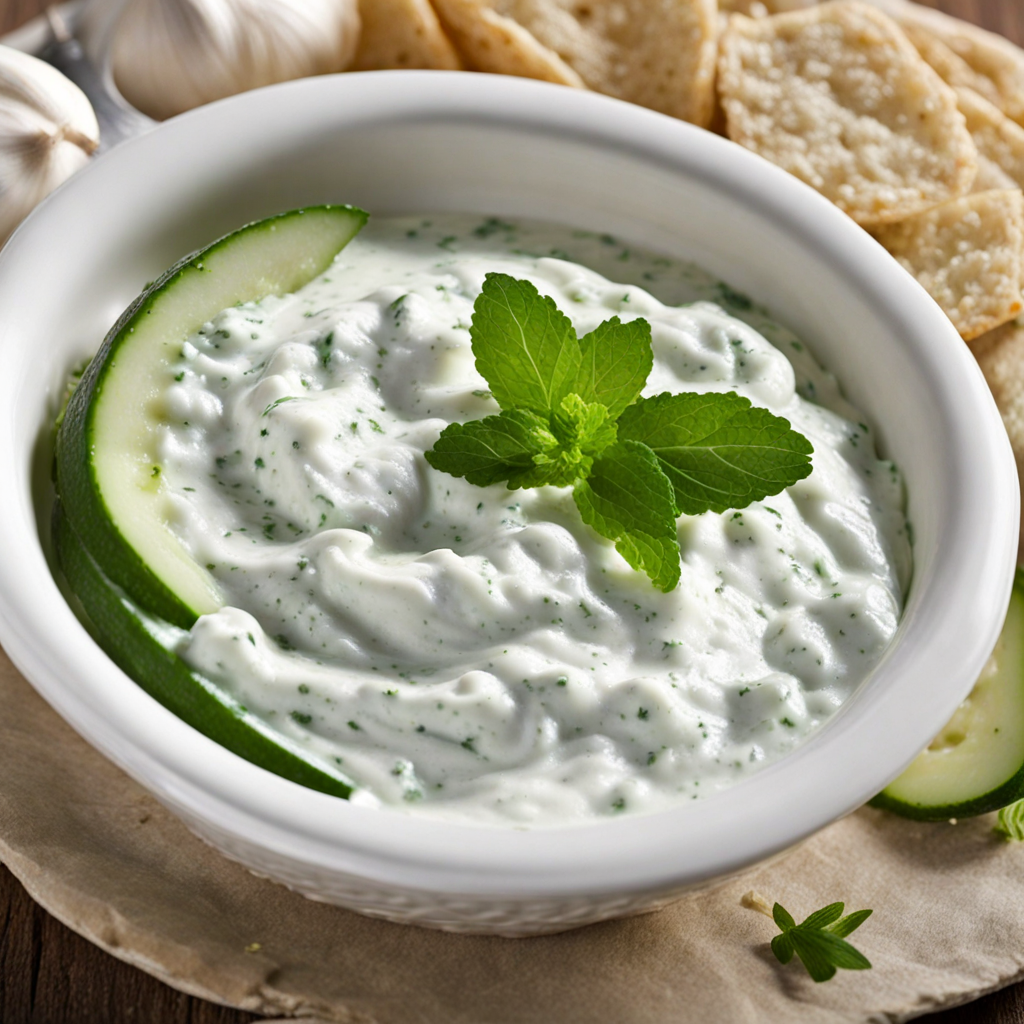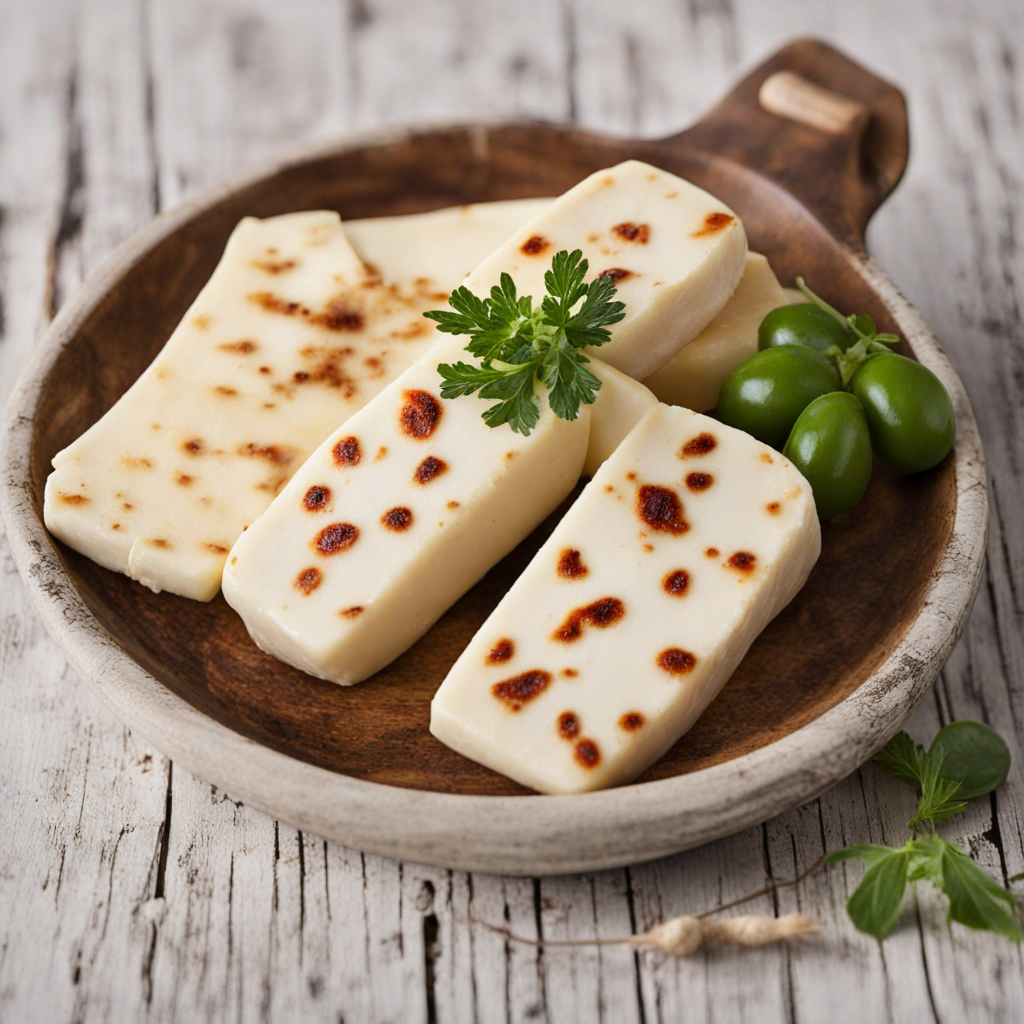Kotopita
Kotopita is a delightful Cypriot dish that embodies the rich culinary heritage of the island. This savory pie features layers of flaky, golden-brown pastry enveloping a luscious filling made primarily from tender chicken, aromatic herbs, and a blend of creamy cheeses. The combination of textures—from the crispy outer crust to the succulent interior—creates a satisfying experience that is both comforting and indulgent. The use of ingredients like fresh parsley, dill, and sometimes a hint of lemon zest elevates the flavor profile, making every bite a burst of freshness. What sets Kotopita apart is not just its filling but also the unique spices that are often incorporated, such as cinnamon and allspice, which add warmth and depth to the dish. Traditionally served as a main course or a hearty snack, it is often enjoyed with a side of tangy yogurt or a fresh salad, providing a balance of flavors that enhances the overall meal. The dish is versatile, too, as variations can be found across different regions of Cyprus, each adding its own local twist to the classic recipe. Whether you’re savoring a slice during a family gathering or enjoying it at a local taverna, Kotopita offers a taste of Cypriot culture that is both nourishing and memorable. Its comforting nature makes it a perfect choice for any occasion, from festive celebrations to casual dinners. As you explore this enticing dish, you'll not only discover new flavors but also a piece of Cyprus's culinary legacy that speaks to the heart of Mediterranean cooking.
How It Became This Dish
The Enigmatic Journey of Κοτόπιτα: A Culinary Treasure from Cyprus Origins and Historical Context At the crossroads of the Mediterranean, Cyprus has long been a melting pot of cultures, traditions, and culinary practices. Among its many gastronomic delights, the dish known as Κοτόπιτα, or chicken pie, holds a special place. Its origins can be traced back to the island's rich agricultural heritage and its complex history of invasions, trade, and cultural exchanges. Historically, the Cypriots relied heavily on local produce, grains, and livestock as a means of sustenance. The fertile lands of the island allowed for the cultivation of wheat and barley, while the numerous farms dotted across the countryside provided an abundance of poultry, particularly chickens. The idea of using these ingredients in a pie format likely emerged as a practical solution to utilize leftovers and make hearty meals that could feed families. The earliest records of pie-like dishes in the Mediterranean date back to the ancient Greeks and Romans. However, Κοτόπιτα specifically began to take form during the Byzantine era, when the influence of the Eastern Roman Empire brought with it a variety of culinary techniques and recipes. The use of phyllo dough, a key component in Κοτόπιτα, can be traced to this period, although it became more refined and popularized in the subsequent centuries. Cultural Significance Κοτόπιτα is not merely a dish; it is a symbol of Cypriot hospitality and familial love. Traditionally served at family gatherings, holidays, and celebrations, the pie embodies the spirit of sharing and community. It is often prepared in large quantities, allowing families to come together over a warm, home-cooked meal. The act of making Κοτόπιτα is also significant, as it often involves multiple generations of women working together, passing down recipes and techniques from mothers to daughters, thereby preserving culinary heritage. Moreover, the dish is versatile and adaptive, reflecting Cyprus's multicultural society. The recipe can vary widely from one household to another, with some families adding their own twist, such as incorporating local herbs, spices, and even vegetables. This adaptability makes Κοτόπιτα a beloved staple across different social strata, from humble village kitchens to more sophisticated urban settings. The Components of Κοτόπιτα At its core, Κοτόπιτα consists of a savory filling made primarily of chicken, combined with a mixture of ingredients that may include onions, garlic, and a variety of spices, often enhanced with fresh herbs like parsley and dill. The filling is enveloped in layers of thin phyllo pastry, which provides a delightful crunch and texture contrast to the tender filling. The preparation of the dough is an art in itself. Traditionally, the dough is made from flour, water, and a pinch of salt, kneaded vigorously until it reaches the right consistency. The skill lies in rolling it out into incredibly thin sheets, which can then be layered in a baking dish. Each layer is brushed with oil or melted butter to achieve the desired flakiness when baked. In modern times, while some still adhere to the traditional techniques, many have embraced convenience by using store-bought phyllo dough. Regardless of the method, the heart and soul of Κοτόπιτα remain unchanged—a comforting, flavorful pie that brings people together. Evolution Through Time As Cyprus underwent various political and social changes, so too did its culinary landscape. The British colonial period in the late 19th and early 20th centuries introduced new ingredients and cooking methods that influenced traditional Cypriot cuisine. This period saw the integration of spices and cooking techniques from Indian and Middle Eastern cuisines, enriching the flavors of Κοτόπιτα. Post-independence in 1960, Cypriot cuisine continued to evolve, embracing globalization while still cherishing traditional recipes. During the 1970s and 1980s, the dish gained popularity beyond the island, as Cypriot immigrants brought their culinary traditions to new lands. Restaurants began serving Κοτόπιτα in cities with significant Cypriot communities, introducing it to a broader audience. This exposure helped cement its status as a quintessential Cypriot dish, recognized and appreciated by food lovers around the world. In contemporary times, the rise of food culture and the growing interest in traditional recipes led to a renaissance of interest in Κοτόπιτα. Chefs and home cooks alike began exploring innovative variations, incorporating local and seasonal ingredients. Today, you may find versions of Κοτόπιτα that include not only chicken but also mushrooms, spinach, and even cheese, showcasing the dish's adaptability and enduring appeal. Culinary Festivals and Contemporary Appreciation In recent years, Κοτόπιτα has taken center stage at various food festivals and culinary events held across Cyprus. These celebrations honor the island's rich gastronomic heritage and offer visitors a chance to experience traditional cooking firsthand. Culinary workshops often include demonstrations on how to make the perfect Κοτόπιτα, allowing participants to engage with the local culture and learn from seasoned cooks. Restaurants in Cyprus have also embraced this dish, offering gourmet takes on the classic recipe, often paired with local wines or regional sides. This modern interpretation has ensured that Κοτόπιτα remains relevant in today's culinary scene while still paying homage to its roots. Conclusion: A Culinary Legacy Κοτόπιτα stands as a testament to the resilience of Cypriot culture and the enduring power of food as a medium for connection and nostalgia. From its humble beginnings as a practical dish for families to its status as a culinary emblem of Cyprus, the chicken pie has woven itself into the fabric of Cypriot identity. As it continues to evolve, Κοτόπιτα invites each generation to partake in its rich history—a delicious reminder of the island's agricultural bounty, cultural diversity, and the simple joy of sharing a meal with loved ones. In every bite, one can taste the legacy of those who came before, making Κοτόπιτα not just a dish, but a cherished piece of Cypriot heritage.
You may like
Discover local flavors from Cyprus







